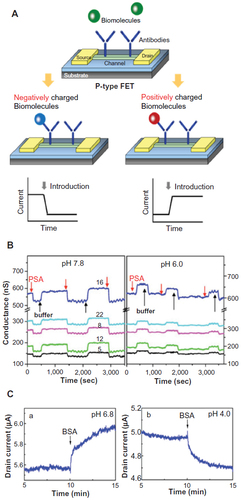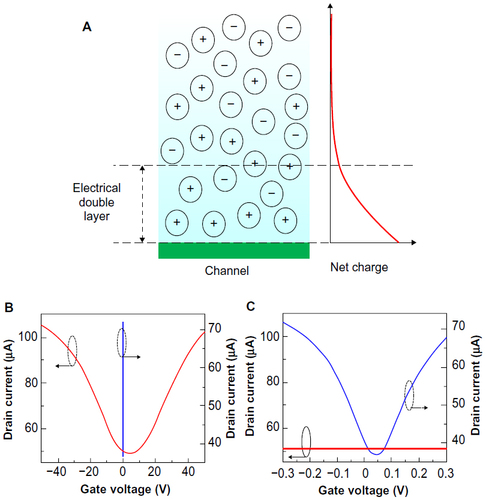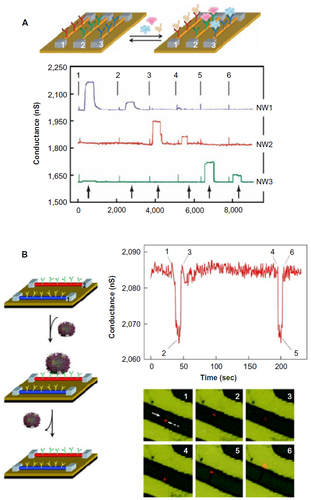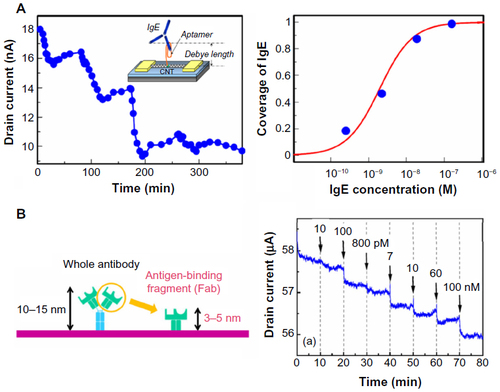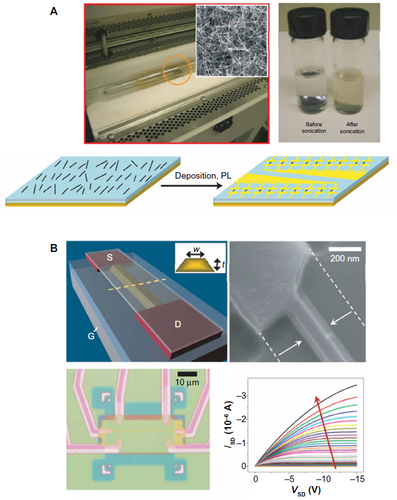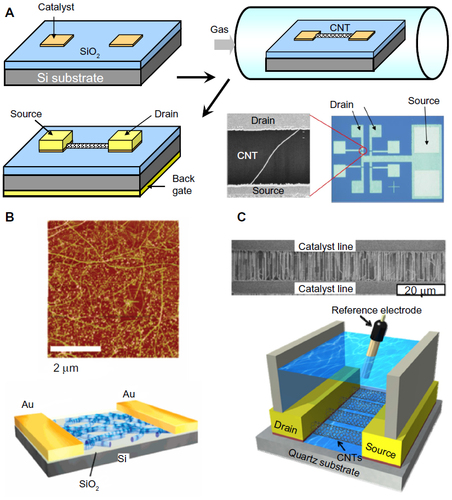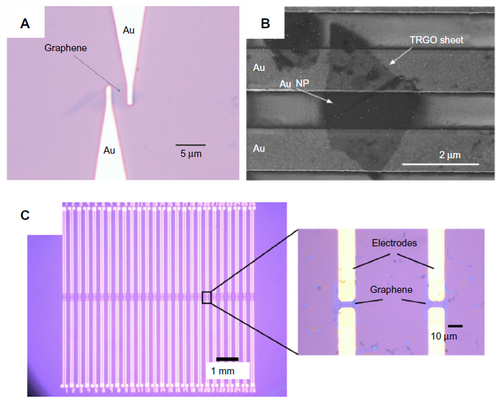Figures & data
Okamoto S, Ohno Y, Maehashi K, et al. Immunosensors based on graphene field-effect transistors fabricated using antigen-binding fragment. Jpn J Appl Phys. 2012;51:06FD08. Kim A, Ah CS, Yu HY, et al. Ultrasensitive, label-free, and real-time immunodetection using silicon field-effect transistors. Appl Phys Lett. 2007;91:103901. Maehashi K, Sofue Y, Okamoto S, et al. Selective ion sensors based on ionophore-modified graphene field-effect transistors. Sensors Actuators B: Chem. 2013;187:45–49. Zheng G, Patolsky F, Cui Y, et al. Multiplexed electrical detection of cancer markers with nanowire sensor arrays. Nat Biotechnol. 2005;23:1294–1301. Patolsky F, Zheng G, Hayden O, et al. Electrical detection of single viruses. Proc Natl Acad Sci U S A. 2004;101:14017–14022. Maehashi K, Matsumoto K. Label-free electrical detection using carbon nanotube-based biosensors. Sensors. 2009;9:5368–5378. Patolsky F, Zheng G, Lieber CM. Fabrication of silicon nanowire devices for ultrasensitive, label-free, real-time detection of biological and chemical species. Nature Protoc. 2006;1:1711–1724. Stern E, Klemic JF, Routenberg DA, et al. Label-free immunodetection with CMOS-compatible semiconducting nanowires. Nature. 2007;445:519–522. Gui EL, Li L-J, Zhang K, et al. DNA sensing by field-effect transistors based on networks of carbon nanotubes. J Am Chem Soc. 2007;129:14427–14432. Okuda S, Okamoto S, Ohno Y, et al. Horizontally aligned carbon nanotubes on a quartz substrate for chemical and biological sensing. J Phys Chem C 2012;116:19490–19495. Ohno Y, Maehashi K, Yamashiro Y, et al. Electrolyte-gated graphene field-effect transistors for detecting ph and protein adsorption. Nano Lett. 2009;9:3318–3322. Mao S, Lu G, Yu K, et al. Specific protein detection using thermally reduced graphene oxide sheet decorated with gold nanoparticle-antibody conjugates. Adv Mater. 2010;22:3521–3526. Zaifuddin NM, Okamoto S, Ikuta T, et al. pH sensor based on chemical-vapor-deposition-synthesized graphene transistor array. Jpn J Appl Phys. 2013;52:06GK04. 